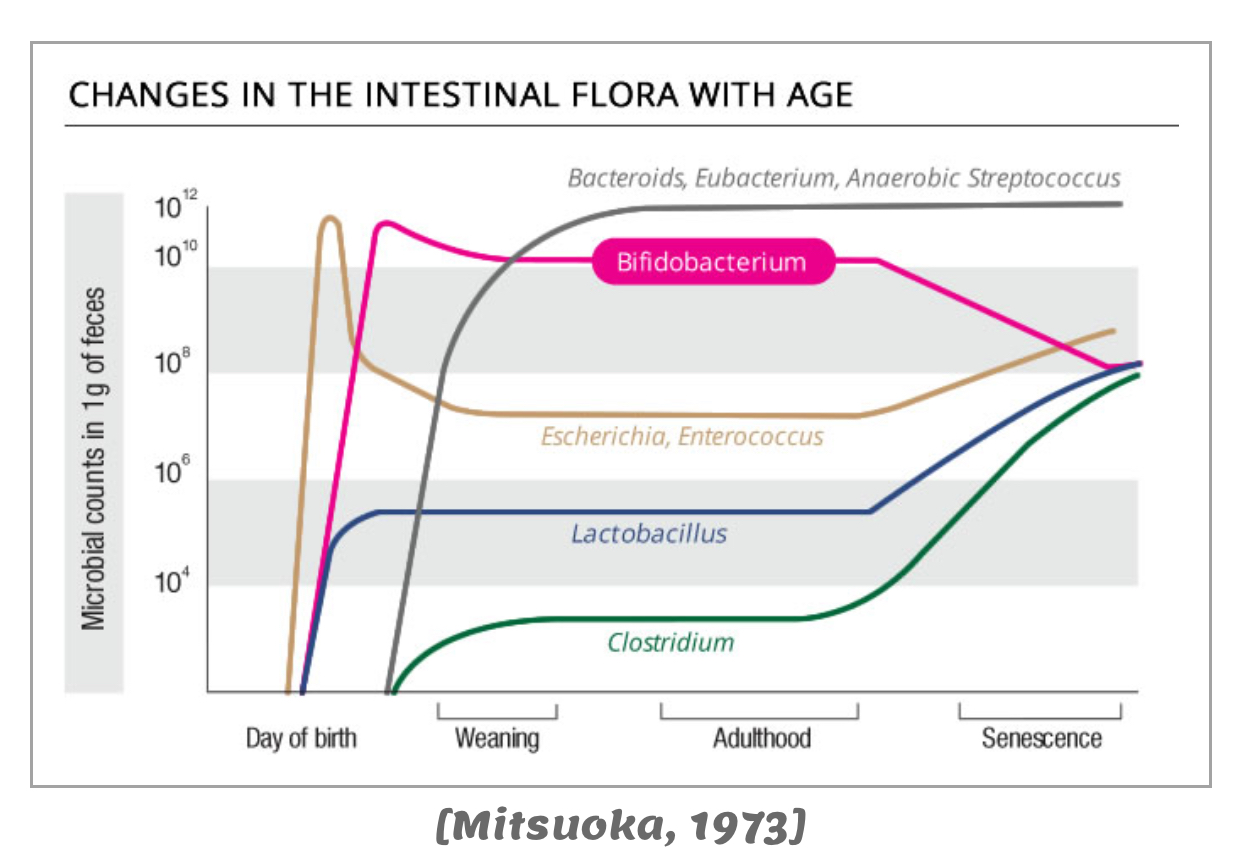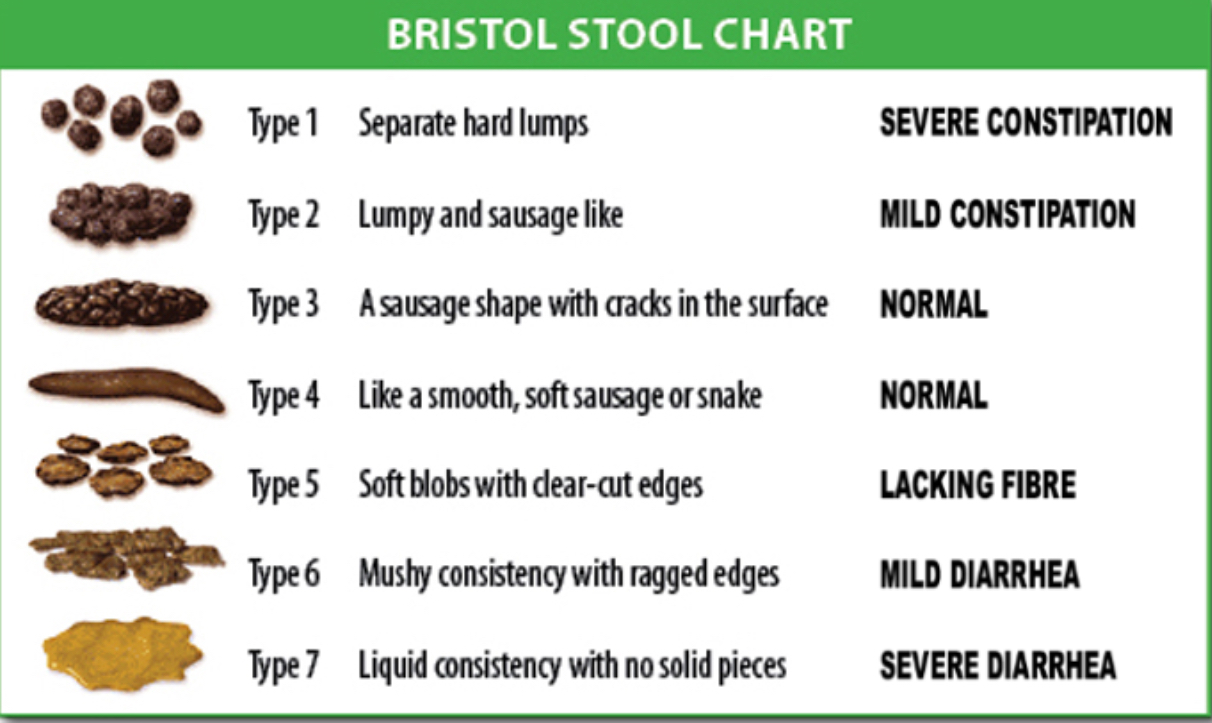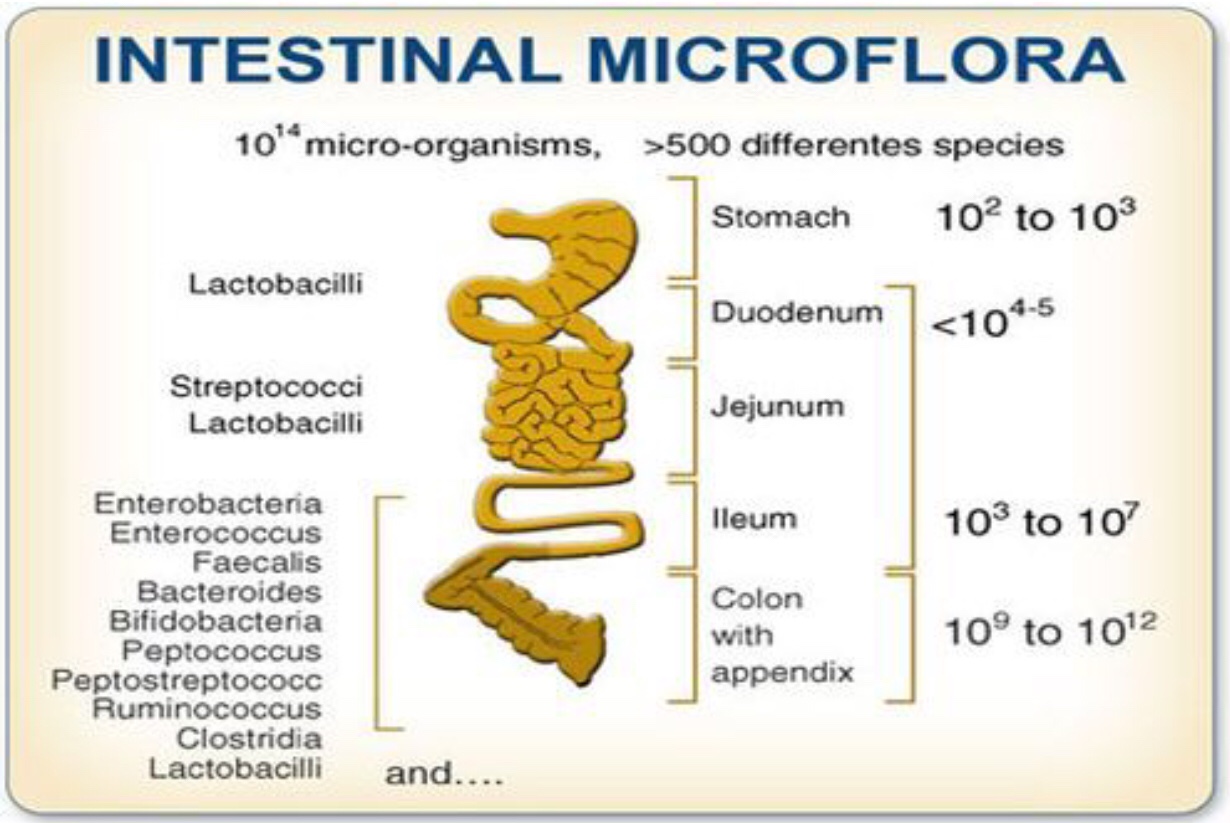Discover the main composition of our intestinal microbiota (IT, FR, DE, EN)
ITALIANO
Microbiota intestinale
Ogni individuo ha un suo profilo di specie che è unico, come le impronte digitali, e cambia negli anni (vedi grafico tutto in fondo al post).
L’alimentazione impatta sul nostro microbiota e la migliore è quella vegetale. È molto importante nutrirlo con una alimentazione giusta e il più possibile variata per garantire una biodiversità intestinale (cereali integrali, frutta, verdura, legumi, cibi fermentati e soprattutto senza zucchero aggiunto).
L’80% dei batteri provoca la fermentazione dalle fibre (verdure) e sono Firmicutes, Lactobacillus e Bifidobacteria.
Il restante 20% provoca la putrefazione dei resti (proteine) e sono Escherichia, Bacteroides, Eubacteria e Clostridium.
La composizione del microbiota è la seguente:
1. Firmicutes (Ruminococcus, Clostridium, Lactobacillus 1,6-1,8%, Eubacterium, Faecalibacterium et Roseburia);
2. Bacteroides (Bacteroides, Prevotella e Xylanibacter);
3. Proteobacteria;
4. Actinobacteria (Bifidobacterium 12-15%);
5. Verrucomicrobia.
Il rapport tra firmicuti e batteroidi è un indicatore importante. In un soggetto sano le percentuali dovrebbero essere rispettivamente 40 e 55.
Questo organo di digestione pesa 1.5 kg (intestino) e si può rinforzare e riequilibrare, in caso di necessità dopo terapia medicamentosa o disbiosi. Per esempio con un reset iniziale (Enterococcus faecium, Saccharomyces bulardii e Lactobacillus acidophilus), seguito da un “ripianto” di bifidobatteri e in seguito di lattobacilli. Qui è essenziale che i batteri presi per via orale siano gastroresistenti, vivi e vitali, cioè che siano in grado colonizzare l’intestino.
Questi ceppi, devono essere sempre presi DOPO aver mangiato perché un intestino pieno (dopo aver mangiato) ha un pH più alto (3.5) e condizioni anaerobici.
FRANÇAIS
Microbiote intestinal
Chaque individu a son propre profil d’espèce qui est unique, comme les empreintes digitales, et change dans le temps (voit graphique tout au bas du post).
La nourriture a un impact sur notre microbiote et le meilleur est celui végétale. Il est très important de bien le nourrir et aussi variées que possible pour assurer la biodiversité intestinale (grains entiers, fruits, légumes, légumineuses, aliments fermentés, rien sucre ajouté).
80% des bactéries provoquent la fermentation à partir de fibres (légumes) et sont des Firmicutes, Lactobacillus et Bifidobactéries.
Les 20% restants provoquent la putréfaction des restes (protéines) et sont Escherichia, Bacteroides, Eubacteria et Clostridium.
La composition du microbiote intestinal est la suivante :
1. Firmicutes (Ruminococcus, Clostridium, Lactobacillus 1,6-1,8%, Eubacterium, Faecalibacterium et Roseburia);
2. Bactéroïdes (Bacteroides, Prevotella et Xylanibacter);
3. Protéobactéries;
4. Actinobactéries (Bifidobactéries 12-15%);
5. Verrucomicrobien.
La relation entre les firmicutes et les bactéroïdes est un indicateur important. Chez un sujet en bonne santé, les pourcentages devraient être respectivement de 40 et 55.
Cet organe digestif pèse 1,5 kg (intestin) et peut être renforcé et rééquilibré, si nécessaire après traitement médical ou dysbiose. Par exemple, avec une première réinitialisation (Enterococcus faecium, Saccharomyces bulardii et Lactobacillus acidophilus), suivie d’une “replantation” de bifidobactéries puis de lactobacillus. Il est essentiel que les bactéries orales soient gastro-résistantes, vivantes et viables, c’est-à-dire qu’elles soient capables de coloniser l’intestin.
Ces souches doivent toujours être prises APRÈS avoir mangé, car un intestin complet (après avoir mangé) a un pH plus élevé (3,5) et des conditions d’anaérobiose.
DEUTSCH
Mikrobiota des Darms
Jedes Individuum hat sein eigenes Artenprofil, das einzigartig ist, wie Fingerabdrücke, und verändert sich im Laufe der Jahre (siehe Abbild ganz am Ende der Post).
Die Nahrung wirkt sich auf unsere Mikrobiota aus und das Beste ist das pflanzliche. Es ist sehr wichtig, sie mit der richtigen Ernährung zu füttern und so vielfältig wie möglich, um die biologische Vielfalt des Darms zu gewährleisten (Vollkorn, Obst, Gemüse, Hülsenfrüchte, fermentierte Lebensmittel, kein Zuckerzusatz).
80% der Bakterien verursachen die Fermentation aus Fasern (Gemüse) und sind Firmicutes, Milksäurebakterien (Lactobacillus) und Bifidobakterien.
Die restlichen 20% verursachen die Fäulnis der Überreste (Proteine) und sind Escherichia, Bacteroides, Eubacteria und Clostridium.
Die Zusammensetzung der Mikrobiota ist wie folgt:
1. Firmicutes (Ruminokokken, Clostridium, Lactobacillus 1,6-1,8%, Eubacterium, Faecalibacterium und Roseburia);
2. Bacteroide (Bacteroides, Prevotella und Xylanibacter);
3. Proteobakterien;
4. Actinobakterien (Bifidobakterien 12-15%);
5. Verrukomikrobiell.
Die Beziehung zwischen Firmicutes und Bacteroiden ist ein wichtiger Indikator. Bei einem gesunden Menschen sollten die Prozentsätze jeweils 40 und 55 betragen.
Dieses Verdauungsorgan wiegt 1,5 kg (Darm) und kann gestärkt und wieder ins Gleichgewicht gebracht werden, wenn nötig nach einer medizinischen Behandlung oder Dysbiose. Zum Beispiel mit einem ersten Reset (Enterococcus faecium, Saccharomyces bulardii und Lactobacillus acidophilus), gefolgt von einer “Neuanlage” von Bifidobakterien und dann Laktobazillen. Dabei ist es wichtig, dass orale Bakterien gastroresistent, lebendig und lebensfähig sind, d.h. dass sie in der Lage sind, den Darm zu besiedeln.
Diese Stämme müssen immer NACH dem Essen genommen werden, da ein voller Darm (nach dem Essen) einen höheren pH-Wert (3,5) und anaerobe Bedingungen aufweist.
ENGLISH
Intestinal microbiota
Each individual has his own species profile which is unique, like fingerprints, and changes over the years (see graph at the bottom).
The diet impacts on our microbiota and the best is the plant based one. It is very important to feed it with the right diet and as varied as possible to ensure intestinal biodiversity (whole grains, fruits, vegetables, legumes, fermented foods and especially no added sugar).
80% of the bacteria causes fermentation from the fibres (vegetables) and are Firmicutes, Lactobacillus and Bifidobacteria.
The remaining 20% causes the putrefaction of the remains (most proteins) and is composed with Escherichia, Bacteroides, Eubacteria and Clostridium.
The main composition of the intestinal microbiota is as follows:
1. Firmicutes (Ruminococcus, Clostridium, Lactobacillus 1,6-1,8%, Eubacterium, Faecalibacterium et Roseburia);
2. Bacteroides (Bacteroides, Prevotella and Xylanibacter);
3. Proteobacteria;
4. Actinobacteria (Bifidobacterium 12-15%);
5. Verrucomicrobial.
The relationship between firmicutes and bacteroids is an important indicator. In a healthy subject the percentages should be 40 and 55 respectively.
This digestive organ weighs 1.5 kg (intestine) and can be strengthened and rebalanced, if necessary after medical treatment or dysbiosis. For example, with an initial reset (Enterococcus faecium, Saccharomyces bulardii and Lactobacillus acidophilus), followed by a “replant” of bifidobacteria and then lactobacilli. Here it is essential that oral bacteria are gastro-resistant, alive and viable, i.e. that they are able to colonize the intestine.
These strains must always be taken AFTER eating because a full intestine (after eating) has a higher pH (3.5) and anaerobic conditions.


Feci – Stuhl – Selles – type 4 is the optimal one. Source: Wikipedia

